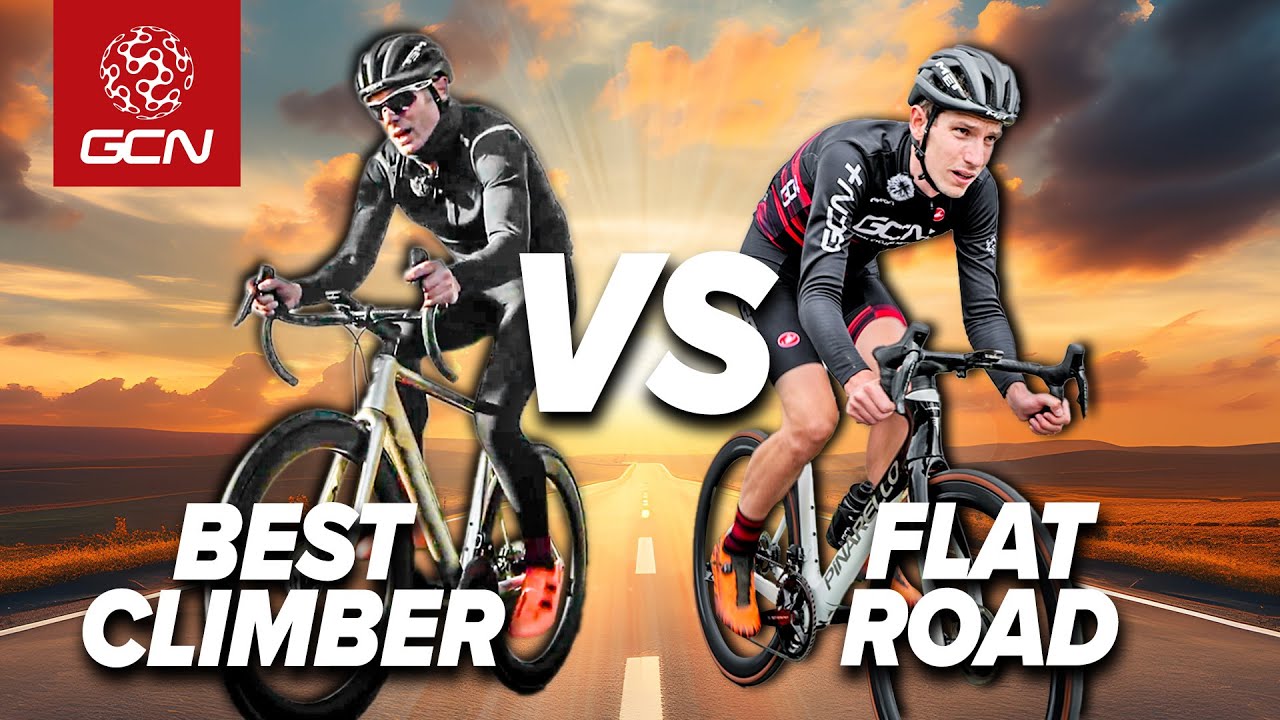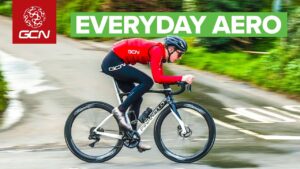Can We Defeat The World’s Best Climber With… A Flat Road? with GCN
Source: GCN Youtube Channel: Can We Defeat The World’s Best Climber With… A Flat Road?
Video Can We Defeat The World’s Best Climber With… A Flat Road? with Global Cycling Network
Video Can We Defeat The World’s Best Climber With… A Flat Road? with Global Cycling Network YouTube Channel.
Can We Defeat The World’s Best Climber With… A Flat Road?
Andrew Feather, one of the world’s best climbers, has faced many challenges in his cycling career. From steep climbs to long hours in the saddle, he has triumphed over every obstacle. However, there is one challenge that has eluded him – the flat road. In this article, we will explore the ultimate challenge for Andrew Feather, the world’s best climber, as he takes on a completely flat road. We will delve into the reasons behind his struggle on the flat and analyze the factors that come into play when transitioning from climbing to flat time trials.
The Challenge of the Cotswalds
Andrew has been brought to GCN’s theater of Dreams in the flat and featureless expanse of the Cotswolds, a wild and windswept place in South Central England. The Cotswolds may not be a mountain range or a steep incline, but it presents a unique challenge to a climber like Andrew. With only a few brave souls who appreciate the flatness of the area, the Cotswolds provide the perfect backdrop for Andrew to take on this unconventional challenge.
Why Climbers Struggle on the Flat
Climbers, like Andrew, are specialized in their ability to conquer steep and challenging ascents. However, the skills and techniques required for climbing may not necessarily translate to flat time trials. As we have seen with some of the world’s best pro climbers, many can also excel in flat time trials, but there are also those who struggle with it. The question arises: why do climbers find it difficult to adapt to flat terrain?
Pedaling Dynamics and Aerodynamics
One of the factors that come into play when transitioning from climbing to flat time trials is pedaling dynamics. When climbing, riders tend to utilize different muscle groups and pedal in a standing position. However, on the flat, the pedal stroke changes, and the riders need to maintain power while seated for extended periods. Additionally, aerodynamics become crucial on the flat, as it is not a factor that climbers typically consider. Riders need to find the balance between generating power and maintaining an aerodynamic position, which can be a challenge for climbers.
Power Output and Positioning
Andrew Feather, known for his impressive power-to-weight ratio and ability to generate high power outputs while climbing, faces a different set of challenges on the flat. His preferred out-of-the-saddle climbing position may not be as effective in a flat time trial. The seating position and muscle engagement required for sustained power output on the flat may not align with the strengths of a climber like Andrew.
Andrew’s Experience on the Flat
Taking on the challenge of the flat road in the Cotswolds, Andrew expressed his initial thoughts on the terrain. His usual riding on flat roads is merely a means to get to the bottom of a hill, indicating his lack of experience and preference for climbing. His observations highlighted the difficulty of generating power and the feeling of using different muscle groups.
The Data Revealed
After completing the time trial, Andrew’s performance on the flat was compared to his climbing abilities. The significant difference in power output and average speed between climbing and the flat road time trial was evident. Andrew’s struggle to maintain high power output and pedaling dynamics on the flat further reiterated the challenges climbers face in this domain.
Reflecting on the Challenge
Post-time trial, Andrew reflected on his experience and reiterated the difficulty he faced in generating power and maintaining a seated position. The difference in his power output and performance on the flat road compared to climbing highlighted the specialized nature of climbing and the challenges climbers encounter when transitioning to flat time trials.
The Conclusion
The ultimate challenge of the flat road revealed a different side to Andrew’s cycling abilities. Despite being a world-class climber, he struggled to adapt to the unique demands of a flat time trial. The conclusion drawn from this experience is that specialization in cycling is not limited to one aspect, and each discipline presents its own unique challenges. Andrew’s preference for climbing and his exceptional talent in this domain showcase the diversity of skills and expertise within the cycling world.
In conclusion, the challenge of the flat road presented a unique test for Andrew Feather and shed light on the difficulties climbers face when tackling flat time trials. The specialized nature of climbing and the differences in pedaling dynamics, power output, and aerodynamics on the flat all contributed to Andrew’s struggle. This experience serves as a reminder that cycling encompasses a wide range of disciplines, and each presents its own set of challenges and rewards. Andrew’s willingness to take on this unconventional challenge demonstrates his versatility as a cyclist and his commitment to pushing the boundaries of his abilities.
The opinions expressed in this space are the sole responsibility of the YouTube Channel Global Cycling Network and do not necessarily represent the views of CicloNews.










